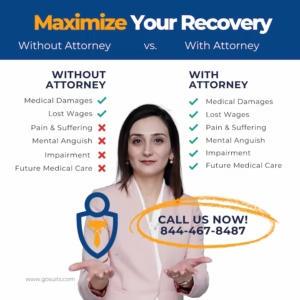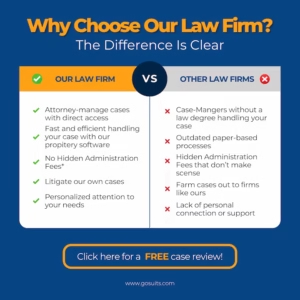A recent collision in Ottawa, Illinois, involving a child riding an electric bike and a semi tractor-trailer, underscores the potential dangers present when large commercial vehicles and vulnerable road users share the roadways. The incident, which occurred on Tuesday afternoon, has prompted an investigation into the circumstances surrounding the crash. This article aims to provide information about the accident and discuss the potential legal avenues available to the injured child and their family.
Incident Details
According to the Ottawa Police Department, officers responded to the 1500 block of West Norris Drive at approximately 2:15 p.m. on May 27, following reports of a collision between an electric bike and a semi tractor-trailer. The injured child was transported by Ottawa Fire Department medics to OSF Saint Elizabeth Medical Center for treatment. The extent of the child’s injuries has not been released, and further details about the child’s age and gender were not provided in the initial news release.
The Ottawa Police Department’s traffic crash reconstructionist is currently investigating the crash with assistance from the Illinois State Police. Anyone with information about the incident is asked to contact the Ottawa Police Department at 815-433-2131.
Electric Bikes and Road Safety
The increasing popularity of electric bikes (e-bikes) has brought forth discussions about road safety and the responsibilities of all road users. E-bikes offer a convenient and environmentally friendly mode of transportation, but they also present unique safety challenges, particularly when sharing roadways with larger vehicles like semi-trucks.
E-bikes can travel at speeds comparable to cars in urban settings, but they offer riders less protection in the event of a collision. Additionally, children operating e-bikes may lack the same level of experience and judgment as adult drivers, making them more vulnerable to accidents.
Rules of the Road for E-bikes
In Illinois, e-bikes are generally subject to the same rules of the road as traditional bicycles. However, there are some specific regulations that apply to e-bikes, including:
- Classification: E-bikes are classified into three classes based on their motor capabilities. Class 1 and Class 2 e-bikes have a maximum assisted speed of 20 mph, while Class 3 e-bikes have a maximum assisted speed of 28 mph.
- Age Restrictions: There are no age restrictions for operating Class 1 and Class 2 e-bikes. However, riders must be at least 16 years old to operate a Class 3 e-bike.
- Helmet Requirements: Illinois law does not require e-bike riders to wear helmets, but it is strongly recommended for safety, particularly for children.
- Where E-bikes Can Be Used: E-bikes are generally allowed on bicycle paths and other locations where traditional bicycles are permitted. However, local ordinances may restrict e-bike use in certain areas.
Safety Recommendations for E-bike Riders
To ensure safety, e-bike riders should:
- Wear a helmet
- Obey all traffic laws
- Use hand signals to indicate turns and stops
- Be visible by wearing bright clothing and using lights and reflectors
- Be aware of their surroundings and potential hazards
- Ride defensively
Semi-Truck Accidents: Unique Risks and Legal Considerations
Collisions involving semi-trucks often result in serious injuries due to the size and weight of these vehicles. When a semi-truck collides with a smaller vehicle, such as an electric bike, the consequences can be catastrophic.
Common Causes of Semi-Truck Accidents
Several factors can contribute to semi-truck accidents, including:
- Driver fatigue: Truck drivers often work long hours and may be prone to fatigue, which can impair their ability to operate a vehicle safely.
- Driver negligence: This can include speeding, distracted driving, driving under the influence of alcohol or drugs, or failing to obey traffic laws.
- Improper maintenance: Neglecting to properly maintain the truck, including its brakes, tires, and other critical components, can increase the risk of accidents.
- Overloading: Overloading a truck can make it more difficult to control and increase the stopping distance.
- Equipment failure: Mechanical failures, such as brake malfunctions or tire blowouts, can lead to accidents.
- Hours of Service Violations: Federal regulations limit the number of hours truck drivers can work and drive. Violations of these regulations can lead to driver fatigue and increase the risk of accidents.

Potential Legal Avenues for the Injured Child and Family
In the Ottawa crash, the injured child and their family may have legal options for seeking compensation for their losses. Depending on the circumstances of the accident, potential legal avenues may include:
- Personal Injury Claim: A personal injury claim can be filed against the negligent party to recover damages for the child’s injuries.
- Negligence Claim Against the Truck Driver: If the truck driver’s negligence caused the accident, the child and their family may be able to recover damages from the driver and the trucking company.
- Negligence Claim Against the Trucking Company: A trucking company may be liable for the negligence of its drivers, as well as for its own negligence in hiring, training, or maintaining its trucks.
Damages in a Personal Injury Case
Damages that can be recovered in a personal injury case may include:
- Medical expenses (past and future)
- Lost wages (if applicable)
- Pain and suffering
- Emotional distress
- Disability or disfigurement
- Property damage (e.g., damage to the electric bike)
Importance of Prompt Investigation and Legal Guidance
Following an accident involving a semi-truck, it is crucial to conduct a prompt and thorough investigation to preserve evidence and determine the cause of the crash. This may involve:
- Gathering evidence from the scene of the accident
- Interviewing witnesses
- Obtaining police reports and other official documents
- Inspecting the truck and its maintenance records
- Downloading data from the truck’s electronic logging device (ELD) or “black box”
- Consulting with accident reconstruction experts
Seeking legal guidance from a seasoned personal injury attorney is essential to protecting the rights of the injured child and their family. An attorney can:
- Investigate the accident
- Gather evidence
- Identify all liable parties
- Negotiate with insurance companies
- File a lawsuit, if necessary
- Represent the client in court
- Maximize the compensation the client receives

Commentary from Gosuits Ottawa, Illinois Personal Injury Attorney
The crash in Ottawa involving a child on an electric bike and a semi-truck is a deeply concerning event, and our thoughts are with the child and their family. This type of accident underscores the importance of awareness and caution when it comes to sharing the road with large commercial vehicles, particularly for vulnerable road users like cyclists. In cases where a child is injured due to the potential negligence of a truck driver or trucking company, it is vital to investigate all aspects of the accident and ensure all responsible parties are held accountable. A skilled personal injury attorney can provide support and guidance to the family during this challenging time, help navigate the complexities of state and federal trucking regulations, and work diligently to pursue the just compensation the child needs for their recovery and future well-being.






